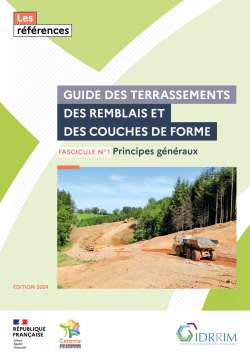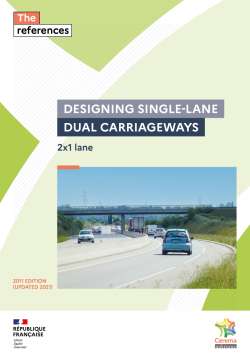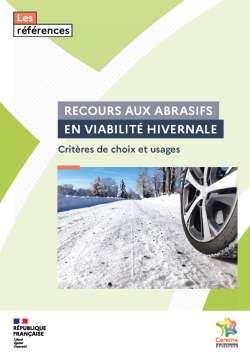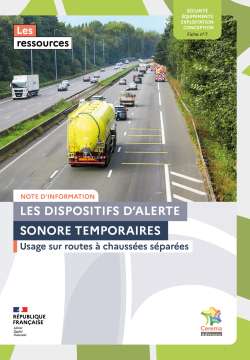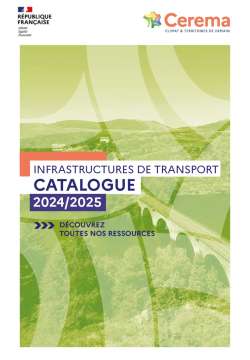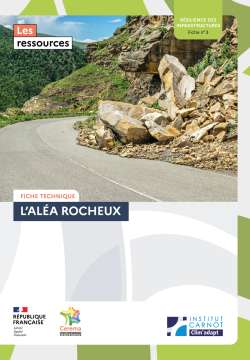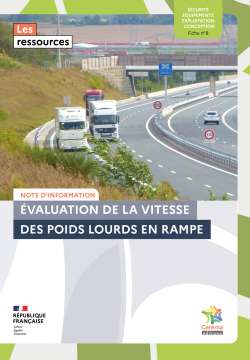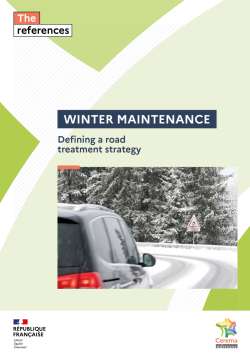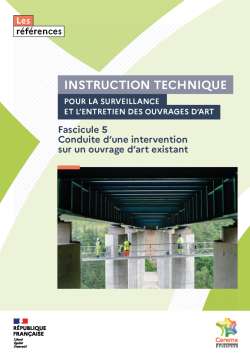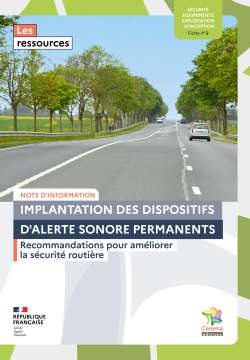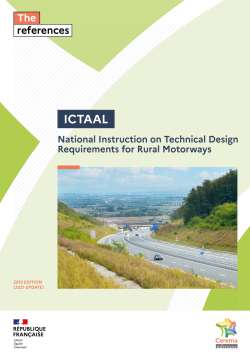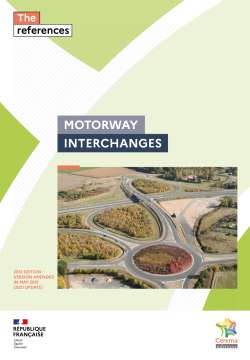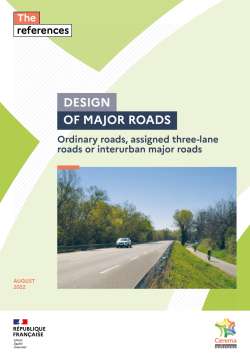
Design of Major Roads
Ordinary roads, assigned three-lane roads or interurban major roads
This document serves as the reference guide for the general design and geometric definition of two-lane, assigned three-lane or 2x2-lane major roads, located outside urban areas, and equipped with at-grade junctions.
It relates not only to new infrastructures, but also to existing roads, which represent an approximate total of 100,000 km. A significant majority of these roads belong to local authorities. The principles covered in this guide, which are the result of the most recent thinking, seek to adapt road design to the functions performed in the territory, integrating users of powered and non-powered transport to provide them with an appropriate level of service and improve safety.
Acknowledgements
Foreword
Chapiter 1 - General design
- Objectives of road design
- Guiding design principles
- Definition of general characteristics
- Staged development
- Overtaking sections (on two-way single-carriageway roads, type 4.1 and 4.2)
Chapiter 2 - Visibility
- General provisions
- Visibility of obstacles
- Visibility on bends
- Visibility at standard at-grade junctions or access points
- Visibility at roundabouts
- Visibility on approach and in a slip lane or deceleration lane
- Visibility under structures
- Visibility of arrester beds
- Visibility at a stopping point or ancillary area
- Overtaking visibility
- Approach visibility of lane reduction transitions
- Visibility of pedestrian crossings
- Visibility of PT stops
- Existing roads
Chapiter 3 - Cross-sections
- Elements of cross-sections
- Dimensions of elements of cross-sections
- Existing roads
- Crossfall
- Change in cross-section
- Overtaking sections
- Cross-section across engineering structures
- Equipped median strip
Chapiter 4 - Horizontal and vertical alignment
- Horizontal alignment
- Vertical alignment
- Coordination of horizontal and vertical alignment
Chapiter 5 - Junctions
- General design
- Design of standard at-grade junctions
- Design of roundabouts
- Special developments inspired by standard junctions and roundabouts
- Design of half junctions (without access systems)
- Design of half junctions with access systems
Chapiter 6 - Roads in difficult or restricted terrain
- General design
- Cross-sections
- Horizontal alignment
- Vertical alignment
- Co-ordination of horizontal and vertical alignment
- Junctions
- Designing roadsides
- Road restraint systems
Treatment of transitions
- Approaching urban areas
- Approaching and passing through hamlets
- Approaching bends
- Approaching junctions
- Transition between two types of roads
- Transition between two categories on the same type of road
- Transition between two different sections with different levels of function
Road equipment - Services - Use of the road 103
- General
- Signage
- Rumble strips
- Road restraint systems
- Collection, processing and drainage of rainwater runoff
- Noise abatement facilities
- Street lighting
- Parking options and other user services
- Public transport stops
Appendices
- Appendix A - Spaces and uses
- Appendix B - Visibility for crossing a priority cycle facility from a secondary road
- Appendix C - Consideration of mobile obstruction in overtaking visibility
- Appendix D - Application of extended portions in bends
- Appendix E - Configurations of horizontal alignment to be ruled out
- Appendix F - Specific junctions
Thematic bibliography
Glossary





